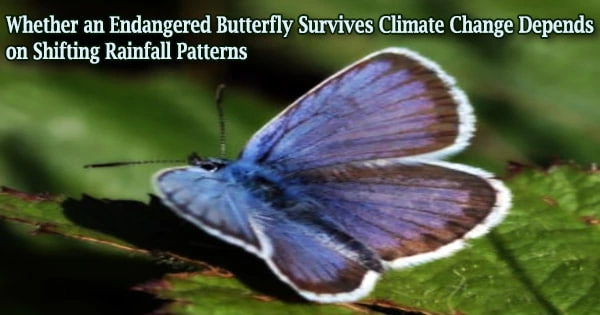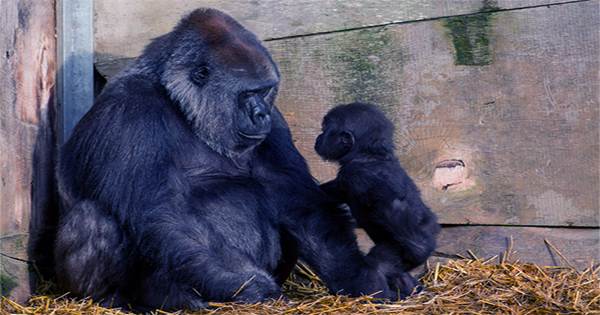When we think about climate change, we usually think of how a warmer world will affect species, but a recent study emphasizes the relevance of precipitation changes. According to the findings, paying attention to environmental triggers throughout each species’ lifecycle can help us better understand how climate change may influence them.
Climate change is the periodic adjustment of the Earth’s climate caused by changes in the atmosphere and interactions between the atmosphere and other geologic, chemical, biological, and geographic variables within the Earth system.
The Miami blue butterfly (Cyclargus thomasi bethunebakeri) was the subject of the study, which is a federally endangered species that only survives in a small area in southern Florida.
Because of their federal status, greater resources are directed toward their conservation, and understanding the lifecycle of the Miami blue in relation to our changing climate is crucial for forecasting how they will fare in the future.
Climate is generally roughly defined as the average weather in a certain location, taking into account factors such as temperature, precipitation, humidity, and windiness. Climate, according to a more specific definition, is the average condition and variability of these features throughout time.
The lifecycle of Miami blue butterflies, like that of many tropical insect species, includes a stage called “diapause,” in which larvae stop growing during periods of drought. When the wet season arrives, diapausing larvae begin to develop into adult butterflies again.
The length of the dry period, and thus the length of diapause, can have a big impact on population growth. If the larvae have a short diapause, they are more likely to reach adulthood and reproduce than if the dry season is protracted and the diapause is long.
We found that shifting rainfall patterns can determine whether the Miami blue butterfly populations grow or shrink, even without any other environmental variables changing. This is not only concerning for this rare butterfly but for all insects in precipitation-driven systems. Both the tropics and rainfall patterns have been largely overlooked in the conversation about climate change and animal lifecycles.
Erica Henry
“We found that shifting rainfall patterns can determine whether the Miami blue butterfly populations grow or shrink, even without any other environmental variables changing,” says Erica Henry, a postdoc in applied ecology at NC State and author of the study.
“This is not only concerning for this rare butterfly but for all insects in precipitation-driven systems. Both the tropics and rainfall patterns have been largely overlooked in the conversation about climate change and animal lifecycles.”
Within the lifecycles of some species, precipitation-based environmental triggers exist. And, unlike temperature, which is expected to rise as a result of climate change, changes in precipitation will be more variable and nuanced around the world: some parts will dry out, some will flood, and others will remain unchanged.
And in certain places, such as southern Florida, it’s unclear how climate change may affect rainfall patterns. To account for this, the researchers used 20 different climate models to forecast future scenarios and see how Miami blue populations will react.
Even while all other environmental parameters remained constant, butterfly populations fell in the majority of those studies when rainfall was delayed and diapause duration increased.
“The tropics, and more specifically that fuzzy area we call the sub-tropics, covers an extremely diverse set of ecosystems that are much more sensitive to projected shifts in precipitation than temperature,” says Adam Terando, a U.S. Geological Survey Research Ecologist and adjunct professor in the Department of Applied Ecology at NC State who co-authored the study.
“The problem is, there’s also a lot more uncertainty about those precipitation changes as the planet warms. We wanted to bring attention to these rainy-season ecosystems and demonstrate how linking climate science with ecology can give us new insights into what to expect in the future.”
This study is one of the first to look at the effects of climate change on a tropical insect via the lens of precipitation rather than temperature. Tropical insect species in places predicted to dry as a result of climate change will likely experience comparable lifecycle implications, including probable decreases. In fact, changes in precipitation patterns may be to blame for the current population decline.
“Climate change is happening everywhere,” says Henry. “We can get a better handle on what actions may minimize the negative impacts to biodiversity by thinking more broadly about what that change really means in different parts of the globe.”
The article, “Shifting precipitation regimes alter the phenology and population dynamics of low latitude ectotherms,” was published in the journal Climate Change Ecology on 3 February 2022.
William Morris of Duke University, Jaret Daniels of the University of Florida, and Nick Haddad of Michigan State University also contributed to the work. Erica Henry received a Global Change Fellowship from the Southeast Climate Adaptation Science Center, as well as funding from the Disney Conservation Fund and the Florida Keys National Wildlife Refuges.
















